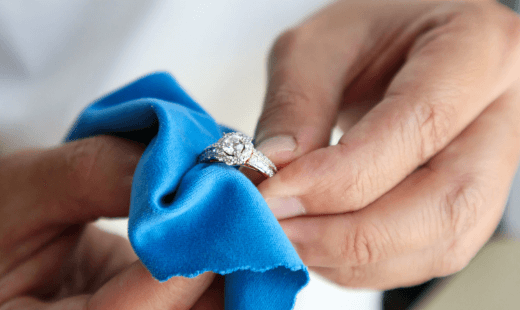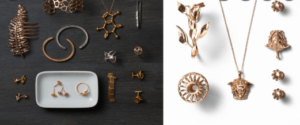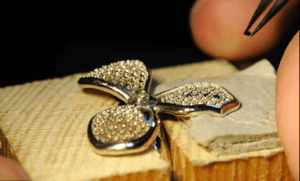Table of Contents
As with many industries, 3D printing is making a real splash in jewelry production, meaning designers are able to produce several pieces a day. From macrame jewelry to plastic rings, 3D printing utilizes the strong points of technology to reduce production time, providing the industry with a competitive advantage when it comes to jewelry production. This is because companies are able to achieve bespoke designs for their clients without spending hours on end to create them.
Additionally, 3D printing can be used in the production of more luxurious jewelry by creating prototypes of what the final product is intended to look like. This is a great way to ensure that the products come out exactly as planned.
Once upon a time, 3D printing solely applied to plastics; however, the process has since evolved to become applicable to metals. This is an extremely complex process, due to the need for polishing and added complications that can be incorporated when jewels are introduced. Despite the complexity of the process, this can still be the easiest way for a designer to achieve what they’ve initially envisioned.
Detailed below is the process of 3D printing in jewelry production.
Producing a Master Pattern
Firstly, a wax or plastic master pattern needs to be made, which is often achieved via a silicone or metal form being filled with castable wax. The mold can be created using the 3D printer; alternatively, the prototype can be directly printed using castable resin.
Making a Mold
Following the production of the master pattern, a mod needs to also be made. These molds get used in a cast tree, so that various parts can be cast at once. Despite this, not all methods will include this stage and will print the tree and parts in one step.
Creating a Ceramic Mold
Otherwise known as the investment mold, the tree gets submerged into suspension multiple times. This coating will then dry and harden, which creates a ceramic layer.
Burning Out
Once coated, the structure gets placed within a furnace, which results in the resin and wax being burned away or melted, creating a hollow shape. These methods require state-of-the-art equipment, which could prevent many companies from making the leap to 3D printing.
Pouring
Upon the material being removed from the ceramic shell, the casting material will get poured in the investment mold and will remain while it cools and solidifies. Often, parts get crafted from brass before being galvanized in precious metals.
Destroying the Shell
After this, vibrations are used to destroy the ceramic coating.
Cutting Off the Results from the Sprue
Once this coating is wholly removed, the cast products get removed from the sprue, ready for recycling.
Final Works
Lastly, the castings undergo traditional mechanical tooling, which is a methos that steers away from the use of fine-powder metal. Consequently, any default form of metal can be implemented within the process.
The Advantages of 3D Printing
The most predominant advantage of 3D printing is that a higher level of detail is achieved, without the jewelry makers having to change their techniques. As a result, specialist types of equipment aren’t required to achieve a unique appearance. Similarly, a strict vaporization process isn’t necessary for the resins used in this particular process.
The Disadvantages of 3D Printing
The biggest disadvantage of 3D printing is the price tag, as the equipment is extremely expensive when it comes to upfront costs. On top of expensive equipment, the materials used in the production process are also very expensive. Finally,3D printed materials are especially sensitive to temperatures, meaning they can easily be deformed.





![1000 Girl Attitude Names for Truecaller ID | UPDATED [Included Boys Names] 1000 Attitude Names for Girls on Truecaller](https://edutechbuddy.com/wp-content/uploads/2025/05/ChatGPT-Image-May-21-2025-11_59_39-PM-1-150x150.png)







![1000 Girl Attitude Names for Truecaller ID | UPDATED [Included Boys Names] 9 1000 Attitude Names for Girls on Truecaller](https://edutechbuddy.com/wp-content/uploads/2025/05/ChatGPT-Image-May-21-2025-11_59_39-PM-1.png)